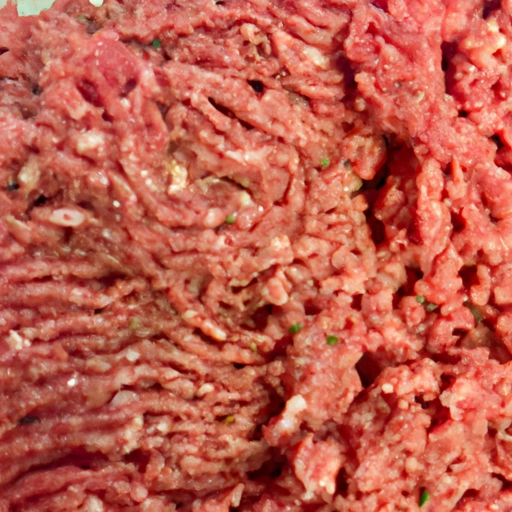Minced Beef
Description

Minced beef, also known as ground beef, is a versatile ingredient derived from beef cuts that are finely chopped by a mincing machine. Available in various fat contents, it's a popular choice in many cuisines for its rich flavor and adaptability in recipes. Minced beef is measured in both ounces (oz) and grams (g), with common portions ranging from 4 oz (113 g) to 1 lb (454 g) for individual servings and recipes.
Common uses
Minced beef is used in an array of dishes, from classic meatballs and burgers to hearty chilis and savory pies. It's a primary component in bolognese sauce, a staple in Italian cooking, and is often used to fill tacos, enchiladas, and burritos in Mexican cuisine.
Nutritional value
Calories
A typical 4 oz (113 g) serving of 85% lean minced beef provides approximately 240 calories.
Protein
This amount of minced beef offers about 21 grams of protein, essential for muscle growth and repair.
Fat
The same serving carries around 17 grams of fat, which includes a mix of saturated and unsaturated fats.
Carbohydrates
Minced beef is naturally low in carbohydrates, with less than 1 gram per serving.
Vitamins
It is a good source of vitamins, particularly B-complex vitamins such as B12, niacin, and riboflavin, which support various bodily functions.
Minerals
Minced beef is rich in minerals like zinc, iron, and phosphorus, which are vital for immune health, oxygen transport, and bone strength.
Health benefits
Consuming minced beef as part of a balanced diet can contribute to muscle maintenance and repair due to its high-quality protein content. The iron found in beef is heme iron, which is more easily absorbed by the body than non-heme iron from plant sources, making it beneficial for preventing anemia. Additionally, the presence of zinc supports the immune system.
Potential risks
While minced beef can be nutritious, excessive intake, particularly of high-fat varieties, may increase the risk of heart disease and other health conditions. It is also important to ensure it is cooked thoroughly to prevent foodborne illnesses associated with raw or undercooked ground meat.
Common recipes
Minced beef is the star in lasagna, cottage pie, and Swedish meatballs. It's also integral to stuffed peppers, sloppy joes, and kebabs.
Cooking methods
Common cooking methods include pan-frying, grilling, broiling, and baking. Minced beef should reach an internal temperature of 160°F (71°C) for safe consumption.
Pairing with other ingredients
It pairs well with robust herbs and spices like garlic, rosemary, cumin, and paprika, as well as ingredients like tomatoes, onions, and mushrooms.
Summary
Minced beef is a cornerstone of many culinary traditions, treasured for its flavor, versatility, and rich nutrient profile. When enjoyed in moderation and cooked properly, it can be a valuable addition to a varied diet. From classic American hamburgers to European meat sauces, minced beef has a global appeal that transcends cultural boundaries.